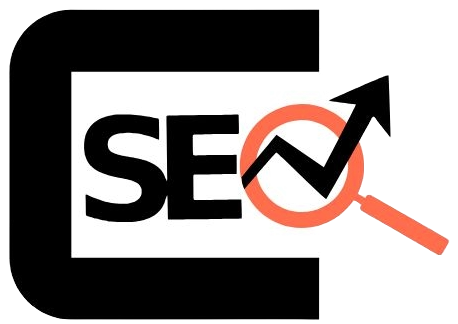Ever looked at someone’s Instagram-perfect outfit and thought, “I could do that—but better?”
That was me, five years ago, standing in a second-hand shop in Shoreditch, clutching a tartan blazer that cost less than a takeaway. Today, I run a fashion blog that attracts thousands of monthly readers, some of whom have gone on to launch their own style platforms. If you’re serious about turning your wardrobe wisdom into something more meaningful (and maybe even profitable), starting a fashion blog might be exactly what you need.
In this guide, I’ll walk you through everything I wish I knew when I started—from choosing the right platform to building authority in a crowded space.
Why Start a Fashion Blog?
Before we dive into logistics, let’s address the obvious: why even start a fashion blog in 2025?
Fashion blogging is more than just flaunting outfits—it’s about storytelling, community-building, and influencing how people see themselves. Whether you’re a thrifting queen, minimalist advocate, or haute couture enthusiast, your perspective is valid and valuable.
According to a 2024 Statista survey, 38% of Gen Z consumers discover new brands via blogs and style guides, not just TikTok or Instagram. That’s a huge audience looking for content that doesn’t disappear in 24 hours.
“Your blog is the only digital asset you truly own.” — Nina Cuthbert, Fashion Content Strategist at Vogue Business
Step 1: Identify Your Fashion Niche
You can’t (and shouldn’t) please everyone. A niche gives your blog clarity, makes you more discoverable on search engines, and attracts a loyal audience.
Examples of Fashion Niches
- Sustainable fashion on a budget
- Plus-size workwear for professionals
- Vintage street style in London
- Capsule wardrobes for digital nomads
My own experience? I started out trying to cover everything. Big mistake. It wasn’t until I honed in on “ethical fashion for urban creatives” that my blog traffic picked up—and collaborations followed.
Step 2: Choose the Right Blogging Platform
Top Choices
- WordPress.org — Best for full control and SEO flexibility
- Squarespace — Stylish templates and built-in analytics
- Wix — Beginner-friendly with drag-and-drop ease
If you’re planning to monetise later, avoid free platforms like Blogger or Medium. Owning your domain (e.g., yourname.com) not only looks professional but boosts trust and authority—key elements for Google’s E-E-A-T.
Tip: Choose a domain name that’s memorable but not restrictive. “ScarletThread” beats “TrendyLooks2020” every time.
Step 3: Set Up the Essentials
What You Need
- Hosting Provider: SiteGround or Bluehost are reliable choices
- Theme: Pick one optimised for mobile and speed
- Core Pages: About, Contact, Privacy Policy, and Blog
Don’t obsess over perfection. My first layout looked like a Word document with glitter—and still attracted readers because the content resonated.
“Design gets them in. Content keeps them coming back.” — Jason Matthison, UI/UX Designer at CreativeBloq
Step 4: Create High-Quality, Personal Content
This is where most blogs either soar or sink. Avoid thin, generic content. Instead, offer:
- Personal stories: Share outfit fails, style epiphanies, or shopping hacks
- Original photography: Smartphone photos work—just focus on lighting and angles
- How-to guides: From “how to style a black turtleneck 5 ways” to “what to wear to a creative job interview”
SEO Best Practices
- Naturally include long-tail keywords like *”affordable plus-size fashion UK”
- Internally link to older posts (once you have them)
- Add meta titles and descriptions
- Optimise images with alt text (“vintage leather jacket street style London”)
External Link Tip: Reference authority sources like British Fashion Council or Statista Fashion Reports.
Step 5: Promote Your Blog (Without Feeling Spammy)
Where to Share
- Instagram (obviously)
- Pinterest (massively underrated for traffic)
- Reddit threads (like r/femalefashionadvice)
- Facebook style groups
But here’s what worked best for me: guest posting and collaborations. I teamed up with other beginner bloggers and we exchanged shout-outs, co-wrote posts, and even hosted online styling challenges.
Step 6: Monetise Authentically
Once you’ve got consistent traffic (or even before), here are ways to earn:
- Affiliate links through LTK, Amazon Fashion, or RewardStyle
- Brand partnerships (reach out with a personalised media kit)
- Style consultations via Calendly or Zoom
- Digital products like style eBooks or wardrobe planners
Don’t force it. Monetisation should feel like a natural extension of your blog’s value.
“Monetise your impact, not just your influence.” — Clara Zhou, Ethical Fashion Coach
FAQs:
Q: Do I need to be a professional stylist to start?
A: Not at all. Many successful bloggers are self-taught, passionate style enthusiasts. Your authenticity is your superpower.
Q: How often should I post?
A: Aim for consistency over frequency. Even one post per week is fine if it’s high quality.
Q: What’s the best way to get noticed?
A: Besides SEO, build real connections in the fashion community. Comment, email, engage. Humans notice humans.
Final Thoughts: Your Style, Your Space
There are thousands of fashion blogs out there, but none with your exact perspective, voice, and story. Starting a fashion blog isn’t about becoming the next Chiara Ferragni overnight. It’s about carving your own corner of the internet and sharing something real.
So here’s my challenge to you: grab your favourite outfit, write a story about it, and hit publish. You don’t need to have everything perfect. You just need to start.
What’s your fashion niche going to be? Leave a comment or DM me on Instagram—I’d genuinely love to hear about it.


